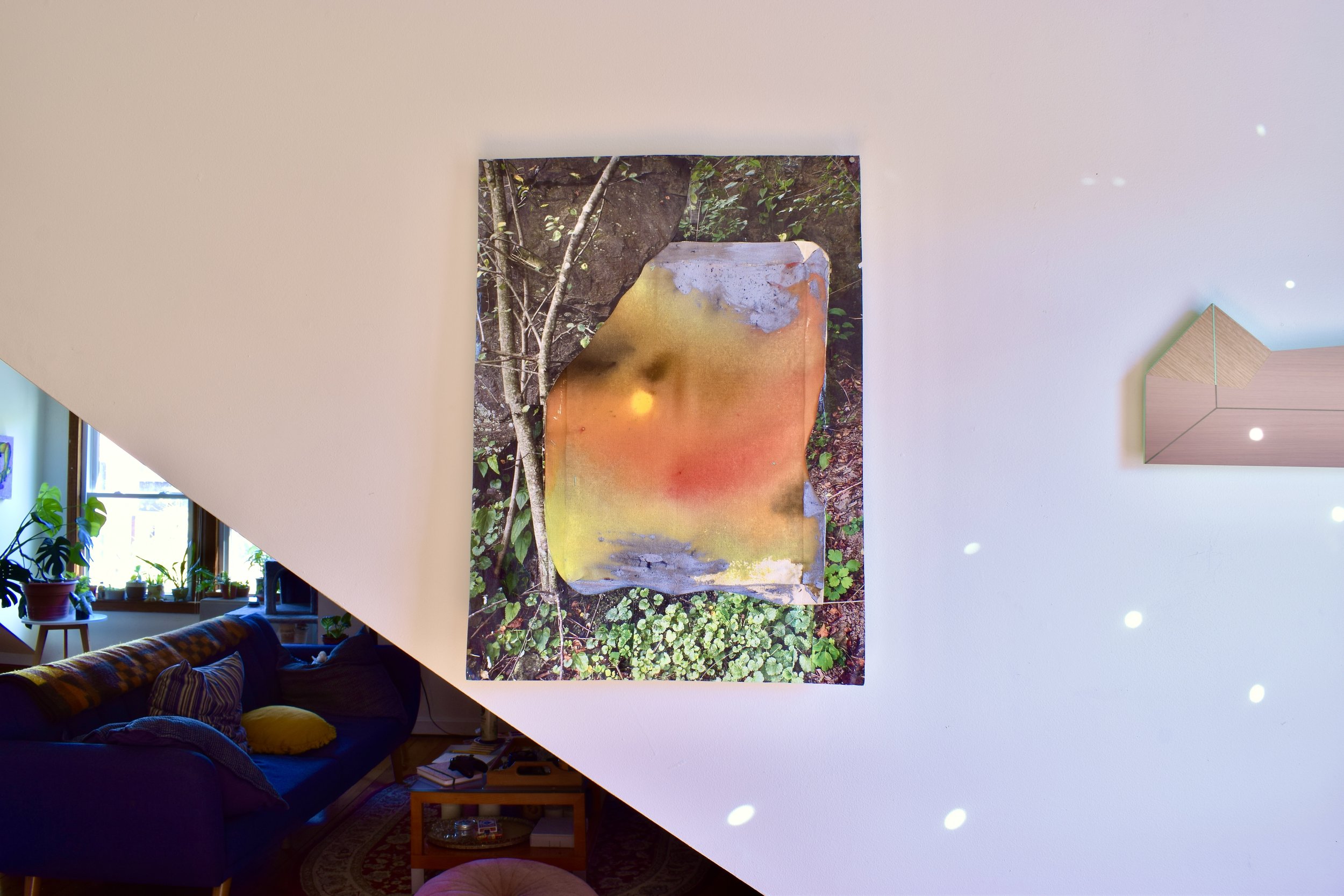Easthaus is proud to present their inceptive exhibition, Seeing Through a Window, a duo show bringing together the work of artists Jenna Girolamo and Trevor Toney. The pairing of these two artists seek to define all of the hidden possibilities found within a new understanding of perspective.
On view August 29th through September 30th.
Seeing Through a Window, is revealed as a double entendre, alluding to the footprint of the inaugural exhibition at Easthaus which places art in close proximity to a window while also acknowledging the long established role windows have played in the tale of painting. As one experiences and seeks to portray our external world they may choose to select from a definition of perspective rooted in a sterile, mathematical process. One that seeks to realistically depict, from a fixed point, three-dimensional objects onto a two-dimensional surface. Or they may pull from the definition that is in an amorphous metaphorical state; unlocking perspective as a poetic approach rendering, not naturalistic depictions of space, but rather the arcane states of being and the many nuanced expressions that are found amongst nature.
We must ask, what does it mean to render perspective in our contemporary society? Has the relationship between artist and mathematical perspective begun to forge a new bond? Where you may expect to find a show about landscapes, your inclination would be mistaken. Rather, the exhibition presented upsets our expectations of the natural world. Seeing Through a Window asks; What if you were to peer through a window and instead of a landscape of geometric reason what you end up seeing are emblematic perceptions of space; untethered perspectives in place of our expected viewpoints?
Jenna Girolamo, (Maine, USA), has answered the question of perspective by finding solace in the act of painting. Using canvas, stained glass, dyes, and paints, Girolamo's brushes, and other makeshift utensils, dance the paint across the surface, staining and bleeding the canvas wet into wet as if we were watching a sort of interpretive foray between material and maker. Girolamo has charged herself with ridding the works of a naturalistic depiction of perspective and space, opting towards defining a more esoteric view of physical existence. Just as Hilma af Klint chose to do all those years ago. With af Klint as a clear forebearer, Girolamo places herself unfixed and undefined in an intimate painting practice, she paints to grasp onto her perspectives, her perceptions, and her memories. Depicting the daily drudgery of life as metaphorical landscapes. Girolamo successfully unifies space with color, harmony, and unity while also being able to reach a similar unification by dividing a painting into fragmentary parts then piecing it back together. In these alternative modes of making Girolamo is able to address her relationship towards capturing the mystical in the real. Her landscapes fluctuate between objectivity and the imagined; between spiritualistic relativism and pictorial realism. Girolamo unveils that, for herself, perception supersedes perspective and shows, fundamentally, that her paintings have become the physical embodiment of metaphorical perceptions.
Trevor Toney, (Massachusetts, USA), has found an intersection between object-making and painting; situating perspective in a realm that is both cold and geometric yet warm and metaphoric. Toney holds a deep understanding of technical skill and woodworking craft which demands your attention once you engage with his works. Using veneering techniques coupled with additive embellishments, Toney pushes illusion through changes in line, color, form and value. This arouses our senses and our relationship to his objects become speculative; we are grappling with the spaces he creates uprooting our expectations. We are met with wood, a natural material that transports us to the trees we might see on a leisurely walk. We are also hinted towards architecture as if Toney is pulling from a lexicon of architectural blueprints. But we are not looking at a tree and we are not looking at buildings. We become trapped in a sort of Necker Cube of perspective that diverts us from reality. We are neither near a naturalist depiction of space nor are we fully absent of it. Toney masterfully alters perspectives within his compositions allowing the viewer to investigate time, perceptions, and biases. Using geometric perspective in a non-naturalistic endeavor, Toney breaks a long history surrounding perspective in painting and allows for other, more warm, more colorful, and more metaphoric renderings of perspective to become our truths.
In the end, the work we are gifted with asks us to ponder the ways that perspective is used to depict the natural world; probing the audience to consider if a clinical view towards perspective is one we must still take as concrete truth. In taking from James Elkins, “The Poetics of Perspective”, Elkins asserts that “perspectives’ risks are seeming a little irrelevant in the face of paintings where there is warmth and richer meanings.” In Seeing Through a Window, Girolamo and Toney’s work has disrupted perspectives' irrelevance, showing us a nature that illuminates much warmer and more prosperous meanings. The paintings are windows nodding to both interior spaces and exterior landscapes manifesting as abstracted perceptions completed by the artists’ desire for balance and unity. Toney and Girolamo have broken open perspectives, showing the viewer their markers of truth in hopes that we are able to do the same.
Exhibition Text By: Drew Eastwood
Curation by: Alyssa Schadhauser & Drew Eastwood

















